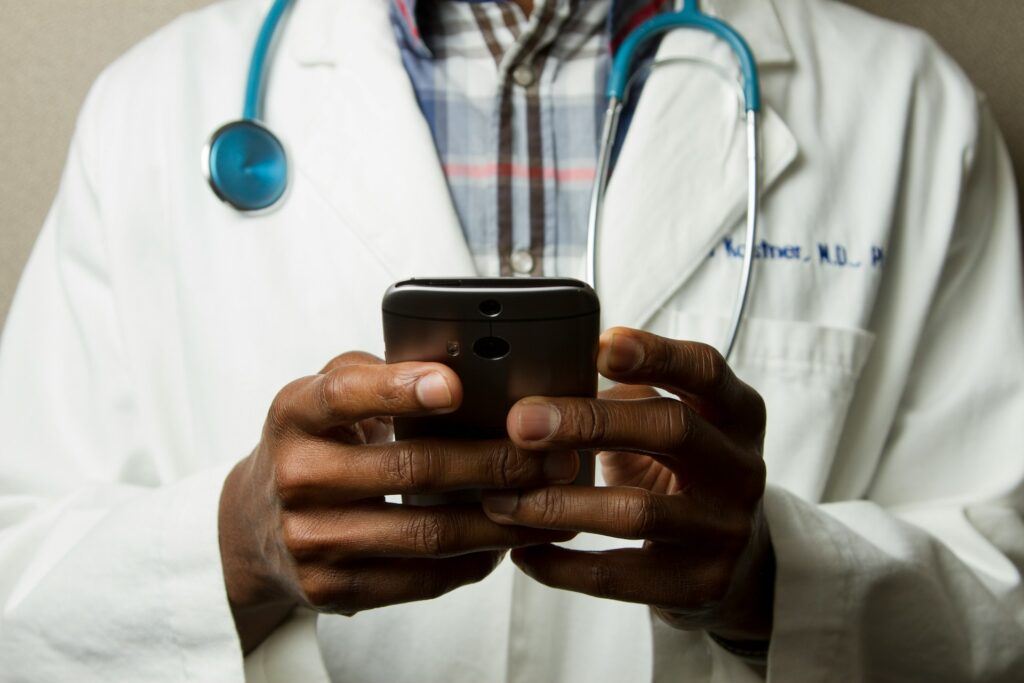Post-pandemic, it’s clearer than ever that medical professionals and care facilities need innovative ways to communicate with patients and provide relevant care. Remote appointments and checkups are on the increase, as are apps and services that encourage health “self-management”. Remote patient monitoring builds on this aspect of telehealth by collecting critical medical information that could direct and alter the course of treatment plans.
What is Remote Patient Monitoring?
Remote patient monitoring or RPM means using devices and apps to monitor various health factors of a patient. This health-specific information is then sent over the internet to the doctor or other medical professional in charge of monitoring the patient’s data.
Some consumers already use devices connected to healthcare metrics. Smartwatches, for example, can prompt users to get up and move or drink water, helping to improve lifestyle choices. RPM goes a step further than this by providing devices that collect and submit information like blood pressure, insulin levels, blood oxygen levels, and more to physicians.
Instant or regular access to this information allows healthcare teams to assess the success of current treatment plans and the opportunities for further care options. They can also update users with any changes that need to be made in real-time. Patients receive care without having to wait for appointments or in-person visits.
The Effectiveness of Remote Patient Monitoring
Recent research covering multiple use cases for RPM discovered that in many instances, remote monitoring reduced the need for acute care interventions. However, the same report indicated that results were “varied” and largely situational.
The clear advantages of remote patient monitoring include:
- The encouragement of patients to manage their own health.
- Personalized care plans.
- Increased collaborative care.
- Better coordination between disparate healthcare providers.
- Accurate detection of an increase or decline in particular health metrics.
All these factors should lead to improved health outcomes. However, there could be some ongoing challenges. These might include:
- Patients who are reluctant to try new devices.
- Concerns about the security of transmitting health information over the internet.
- Patients who want to avoid medical interventions cheating the system, e.g., tricking a step counter into believing the patient went for a prescribed half-mile walk by tapping it to increase the step count.
- Medical facilities failing to keep software updated or install all the relevant components.
This last point can be mitigated by hiring medical software experts or network administrators with experience in healthcare.
Implementing RPM into Recruitment
We recently reported that healthcare roles remain some of the hardest to fill due to talent shortages. Sectors of the healthcare workforce are retiring due to age — more than half the registered nurses (RNs) in the United States are now over 50 years old. Similar figures occur across other medical professions.
Telehealth has become a major factor in ensuring patients get the care they need from a dwindling workforce. This includes factors like remote patient monitoring, which instantly delivers patient information to the relevant practitioner. Recruiting the right team for your medical facility may mean ensuring that candidates understand the importance of RPM. You might even look for more specific skills and experience such as deep knowledge of associated medical devices.
Other skills to advertise for include:
- Data analytics and accurate data collection.
- Specific healthcare areas e.g. cardiology, diabetes, etc.
- Administrative and organizational skills.
- Experience working with electronic health record (EHR) platforms.
- “Soft skills” including patient communication, empathy, and clarity — for example, your new hire might have to explain 20 times a week how to use a particular piece of equipment to a patient. They need to have the patience and care to approach this in a compassionate manner.
Your recruitment team should also stay updated with current salaries in the healthcare worker field. The right benefits package could help you attract top talent where your competitors fail.
Patient Outcomes Determine RPM Hiring Success
Measuring hiring success in healthcare means going beyond conventional recruiting metrics. Patient outcomes must be at the core of what success looks like. New hires who utilize remote monitoring practices effectively could increase the cost-effectiveness of your recruitment strategy while vastly improving patient experiences. Follow MRINetwork to stay up-to-date with recruitment trends across the healthcare industry.

Connect with MRINetwork